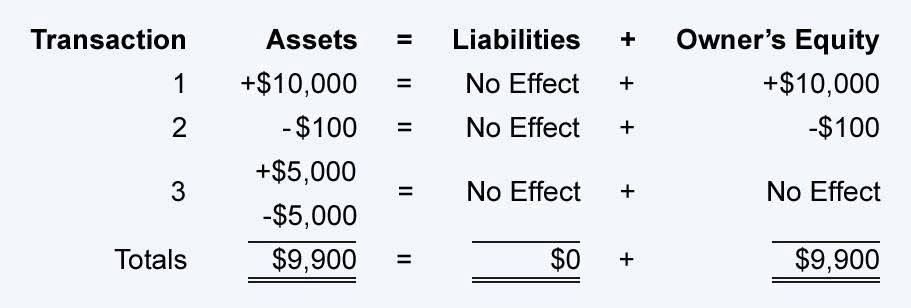
Merchant Maverick’s ratings are not influenced by affiliate partnerships. When you’re looking for an invoice financing partner, Grocery Store Accounting find one that works on your terms. If you need to keep the arrangement discreet, find a funder willing to honor that. If you only need to redeem an invoice occasionally, find a funder that is more lenient.
- Online invoice payment processing is how business customers pay for invoices and retail purchases using their choice of electronic fund transfers (EFT) through an online payment gateway and payment rail.
- Invoice financing usually offers greater flexibility because you can pick and choose which invoices will be financed.
- Then Kay’s Catering successfully pays back the invoice financing company the $16,000 advance and $800 invoice financing and processing fee.
- Sending professional invoices out on time means you get paid faster.
- Since you’ll need outstanding invoices to qualify, this type of financing works well for B2B models with long billing cycles.
- Join Swoop to start reviewing the best options for your needs in minutes.
- When it comes to managing invoices efficiently, Sage invoicing software is a valuable tool.
Business Credit Cards
Explore the world of receipts vs. invoices and discover all you need to know about the differences when to use them, and their importance in our guide. Invoice numbers usually range from five to 15 digits, depending on the company’s system, and must be unique to track transactions accurately. An invoice number, also known as an invoice ID, is a unique code assigned to a specific invoice to distinguish it from other invoices. Today, invoices are normally sent electronically rather than on paper. The terms “invoice” and “bill” are often used interchangeably but there are some key differences.
Can I use invoice financing if I have bad credit?
Be prepared to submit documentation including copies of your invoices, your customers’ payment history and credit standing information, and usual business registration information to get started. A bank invoice financing company, such as altLINE, is a branch of a larger financial institution that is dedicated solely to receivables-based lending. An FDIC-insured, federally regulated bank financing company uses its own cash to cover unpaid invoices, meaning there is less risk involved. This highlights the importance of not just picking the first invoice financing company you come across but instead finding a few highly rated providers and comparing your options. Invoice financing occurs when businesses sell their outstanding receivables to a third-party company for a cash advance.
Surety bonds: Essential tools in international infrastructure Allianz Trade
- When you’re weighing your options, consider invoice financing as a more affordable and sometimes faster alternative.
- Then, once approved and funded, you will be paid out an advance on your invoices, often in a matter of days.
- As a financial services business, we are especially dedicated to raising the level of financial literacy through our business Tips & advice so that individuals can live their lives in confidence and security.
- Your bankers and other lenders (including those providing invoice financing!) can be reassured about the financial stability of your company, and more inclined to guarantee financing.
- Payments can be scheduled in advance, and banks either process them electronically or issue checks on behalf of the payer.
- Businesses issue invoices as detailed bills for goods or services rendered.
- This is a unique financial solution that helps businesses turn their unpaid invoices into quick cash, giving them the working capital they need to meet an immediate obligation.
With accounts receivable financing, businesses can cover short-term costs and create more operational flexibility or spend adequately on growth opportunities that support overall financial stability. If your business needs working capital to continue operating while invoices are outstanding, invoice financing can be a good way to receive funds quickly. Invoice discounting is a common form of invoice financing that works as an asset-based loan, using unpaid invoices as collateral. Invoice factoring is invoice financing another form of invoice financing in which companies sell their unpaid invoices to the factoring company, which is then responsible for collecting payment from customers.

FAQs about invoicing
- However, invoice financing can end up being quite expensive if customers are late to pay or don’t end up paying at all.
- If you have bad credit, you can use credit-building cards to secure the card with cash.
- Taken together, this can represent a total of up to 30% of the value of your invoices in annual interest.
- This can put a strain on cash flow as money is flowing out in line with providing services in a given month, but the money is then flowing back in at a slower pace.
- When your customers eventually end up paying the factoring company, you will receive the rest of the advance.
An accounts receivable line of credit is similar to invoice discounting, but it works slightly differently. Invoice financers will require you to pay fees and/or interest on what you borrow. While invoice financing is one way to avoid cash flow issues, trade credit insurance remains the most reliable way to deal with trade credit risk and avoid cash flow issues. One way to bridge that gap is by borrowing against the value of the invoices you’ve issued… a procedure called invoice financing. In this article, we provide an invoice finance definition and explain how it can help you improve your working capital and safeguard your cash flow.

Your business then repays the advance out of a percentage of future sales or as a fixed payment. The invoice financing company agrees to lend Kay’s Catering 80% of the $20,000 invoice they’re waiting on with a 4% interest fee for every accounting 30 days the loan is unpaid. Managing invoices and bills isn’t just about avoiding late payments—it’s about building a system that drives efficiency and supports long-term growth.
Difference between invoice financing and invoice factoring

You retain control of your sales ledger and are still responsible for chasing your customers for payment. Invoice financing, also called receivables financing, allows small businesses to get funding quickly for outstanding business-to-business invoices. In return for fast access to cash, a business pays the invoice finance company a fee, often a percentage of the amount borrowed. What is more, in certain instalments such as receipt considering, the business can pass on the obligation of utilizing solicitations to the financing provider, thus lessening their credit risk and operational headache. Invoice financing is one of the most commonly used funding solutions for business owners who want to quickly boost cash flow. Not only do you unlock immediate access to funds, but you also don’t incur any additional debt on your list of liabilities.

In situations like factoring, the strongest component of the relationship between the parties is communication, so be sure to keep lines of communication between parties open. Healthy cash flow management practices complement invoice financing, which should be used strategically and not as a permanent measure. They should also be involved in ending diligent accounts receivable practices to minimize dependence on external funding and preserve the company’s long-term financial viability.

發表評論